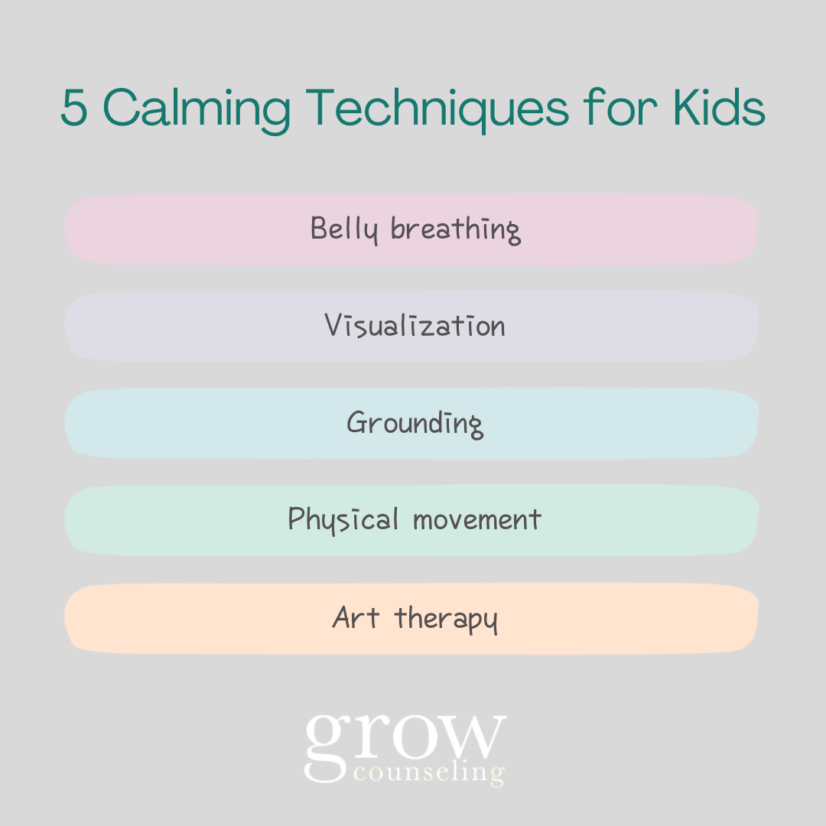Five Calming Techniques for Kids

Children experience a wide variety of emotions on a daily basis. You may notice that your child can quickly go from feeling calm and content to feeling overwhelmed or angry and acting on that emotion.
In my work with parents of young children, I often talk with parents about how they can help their children work through big emotions. I first remind them that all emotions are valid and normal. Then, I discuss how they can teach their children to respond to emotions in a helpful manner, such as taking deep breaths, rather than in an unhelpful manner, such as hitting or throwing something.
When children experience big emotions such as anger, sadness, disappointment, or frustration, they are operating out of the amygdala, the part of the brain responsible for emotions.
During this moment, the part of the brain responsible for rational thinking, called the prefrontal cortex, is “offline.” Teaching and practicing calming techniques with kids can help them work through big emotions by encouraging the rational thinking part of the brain to come “online.”
Below are 5 calming techniques you can teach to and practice with your child:
- Belly breathing – Start by laying on your back. Then, put your hands on your belly. Breathe in through your nose for 4-5 seconds and notice how your belly expands. Then, slowly exhale while noticing your belly deflate. Continue this method of breathing until your body feels relaxed.
- Visualization – Close your eyes and imagine a calm and peaceful place. Name aloud or draw what you can see, hear, smell, taste, and feel in this calm place.
- Grounding – Practicing grounding encourages you to focus on the present moment. One type of grounding technique, called the 54321, focuses on the five senses. To practice 54321, name 5 things you can see, 4 things you can feel, 3 things you can hear, 2 things you can smell, and 1 thing you can taste.
- Physical movement – Go for a walk or bike ride, jump rope, skip, dance, or do yoga to release physical energy associated with big emotions.
- Art therapy – Draw and name the emotion to help externalize it. Talk about what it looks like and what it would say if it could talk.
Next time you notice your child experiencing a big emotion, practice these calming techniques with them and encourage them to notice how they feel afterwards!
Written by: Mary Anne Sylvester
Originally posted on Grow Counseling